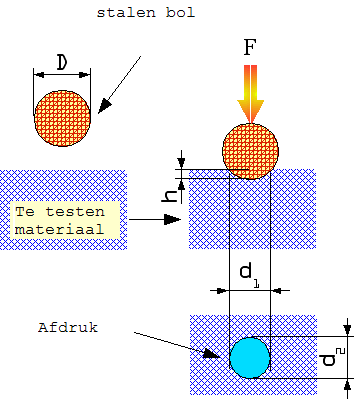Rockwell
Units
The Rockwell hardness is a measure of the hardness of materials, determined according to the Rockwell hardness test. In that test, “hardness” is interpreted as “resistance to local penetration.” The test determines the net depth to which a “penetrator” has penetrated the material after a standard load has been applied.
A test according to the Rockwell method is done as follows: first an “indenter” is placed on the test sample, this is a steel ball or a conical needle with a < span style=”text-decoration: underline;”>diamonds tip. A preload of 10 kg is then applied to the indenter, which is intended to neutralize the influence of local small irregularities on the surface of the material and to hold the indenter in place. The penetration of the front load determines the zero point of the measurement. The actual test load (usually 60, 100 or 150 kg) is then applied to the indenter. After the test load has been removed again, but with the preload still present, the Rockwell hardness is read off on the correct hardness scale; this depends on the choice of the indenter and the test load.
Calculation of hardness according to Rockwell:
The Rockwell hardness can be calculated using the diameter of the ball, the diameter of the depression and the load on the ball.
HB = (0.102 x load)/area of indentation
HB = 0.102 x F/A

| HB | = | the hardness according to Rockwell |
| 0,102 | = | a conversion factor. In the past the force was expressed in kgf, nowadays in Newton. To achieve the same Brinell hardness, a conversion factor is required. |
| F | = | the force on the ball in N |
| A | = | the area of the depression in mm2 |
| D | = | the diameter of the bullet |
| d | = | the diameter of the depression |

